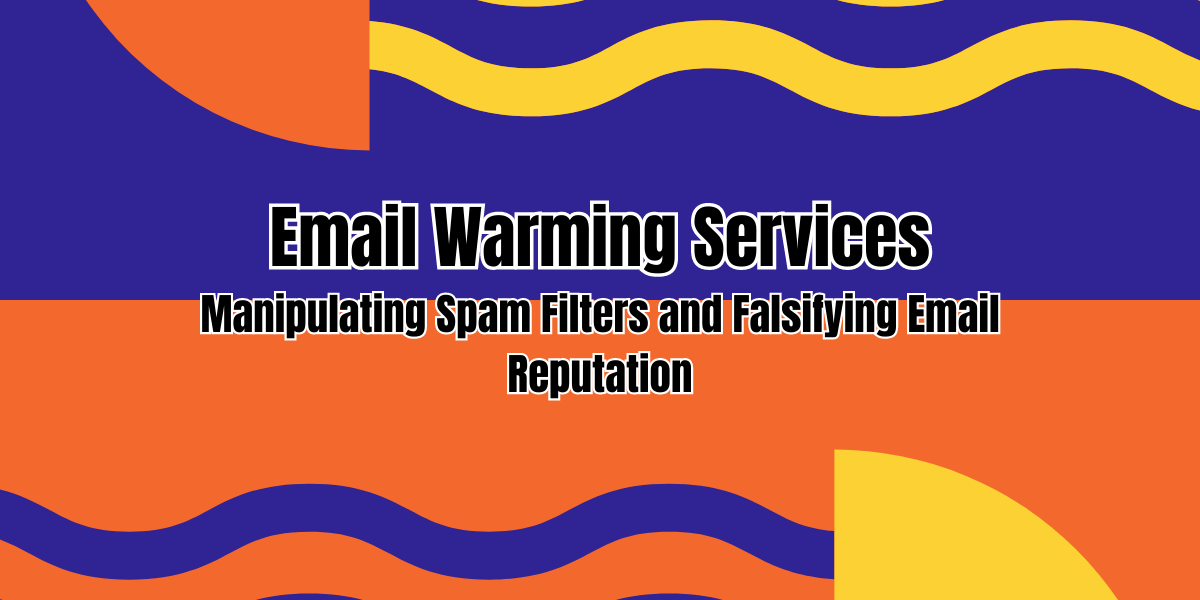Email marketing is a powerful tool for businesses to connect with their audience and drive engagement. However, in an increasingly crowded digital landscape, reaching the inbox can be a challenge due to the strict spam filters employed by mailbox providers. As a result, some businesses turn to email warming services in an attempt to bypass these filters and improve their email reputation. But beneath the surface, these services pose significant risks and can lead to severe consequences for both senders and recipients. In this article, we’ll explore the dangers of using email warming services and shed light on how they can manipulate spam filters while falsely enhancing email reputation.
What are Email Warming Services?
Email warming services are designed to gradually increase the volume of emails sent from a new or less active email account. The premise behind this technique is to establish a positive sender reputation with mailbox providers, thus increasing the chances of inbox delivery rather than being flagged as spam. These services typically employ automated processes to send a growing number of emails over a specified period, simulating natural email activity.
Manipulation of Spam Filters
Email warming services exploit the algorithms employed by mailbox providers to determine the legitimacy of incoming emails. By gradually increasing email volumes, these services aim to deceive spam filters into perceiving the sender as a trusted source with organic engagement. However, this manipulation can have dire consequences. When mailbox providers discover the artificially generated email activity, they may take immediate action, resulting in severe penalties such as being blacklisted or having subsequent emails automatically flagged as spam.
False Improvement of Email Reputation
A good email reputation is crucial for deliverability success. Email warming services claim to enhance the sender’s reputation by mimicking genuine email engagement. However, the reputation built through artificial means is nothing but a facade. Mailbox providers employ complex algorithms that consider various factors beyond just volume, including recipient engagement, content quality, and user feedback. Therefore, relying solely on email warming services may lead to a false sense of security and a failure to address the underlying issues that affect email deliverability.
Compromised Deliverability and Customer Trust
Using email warming services can damage the sender’s deliverability in the long run. When mailbox providers detect manipulation attempts, they tend to respond by actively suppressing or blocking the sender’s emails. This can lead to a significant decline in email deliverability rates, causing businesses to miss out on important customer communications and marketing opportunities. Furthermore, recipients who receive spam or unwanted emails due to deceptive practices may lose trust in the sender’s brand, damaging customer relationships and potentially leading to unsubscribes or even legal implications.
The Ethical and Sustainable Alternative
Rather than resorting to email warming services and taking shortcuts, businesses should focus on building a genuine and engaged email list. This involves obtaining permission from recipients, practising responsible email marketing, and consistently delivering valuable content that aligns with subscribers’ interests. By nurturing an organic and loyal audience, businesses can cultivate a positive sender reputation and achieve sustainable email deliverability in the long term.
While email warming services may promise a quick fix to improve email reputation and bypass spam filters, the dangers they pose far outweigh any potential short-term benefits. Manipulating spam filters and falsifying email reputation can result in severe consequences, including blacklisting and loss of customer trust. Instead, businesses should prioritize ethical and sustainable email marketing practices that focus on genuine engagement, building trust with recipients, and adhering to best practices. By taking the long-term approach, businesses can establish a strong sender reputation, drive meaningful connections with their audience, and ensure their emails consistently land in the inbox where they belong.


